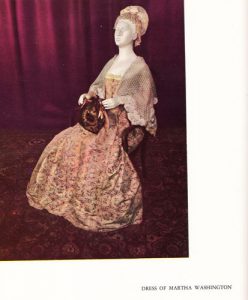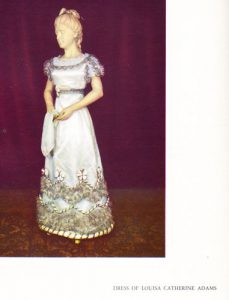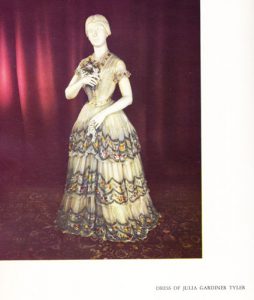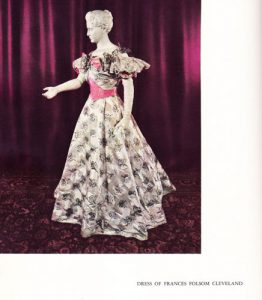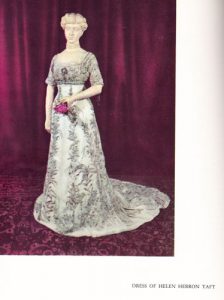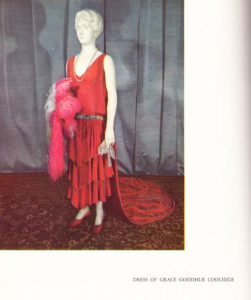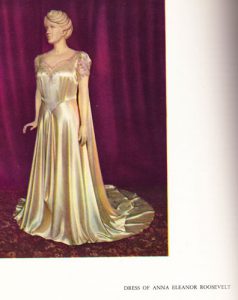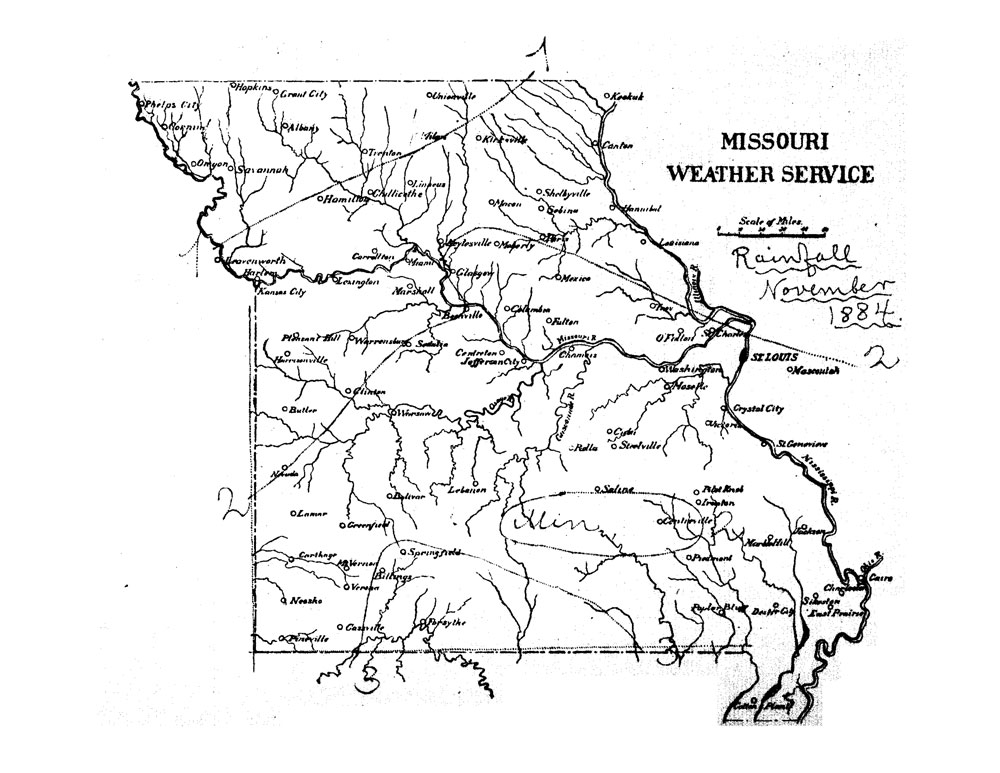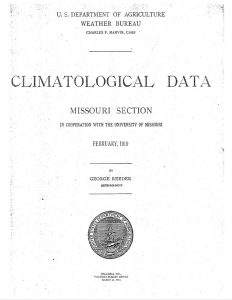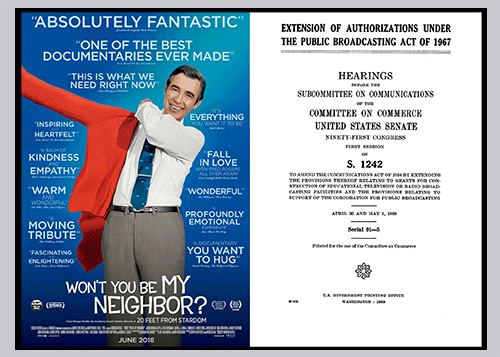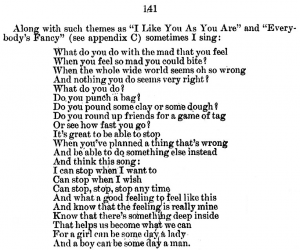Summer officially arrived a couple of weekends ago, and with it the promise of many hot, sunny days — days just right for a nice dip in a cool body of water. As you gather up your swimming gear for a trip to your favorite secret swimming hole, backyard slip ‘n slide, or social distancing pool, we invite you to consider what that swimming kit would have looked like in years gone by with the help of a government document.

Published in 1969, Women’s Bathing and Swimming Costume in the United States is a paper from the Smithsonian Institution’s Bulletin series. In it, costume historian Claudia B. Kidwell traces the evolution of the bathing costume and, later, the swimming costume, starting in the late 18th century. At the same time, she sheds light on history of the sport itself.
In the late 1700s and into the 1850s, long linen or flannel bathing gowns were worn by bathers such as Martha Washington when they went for therapeutic plunges in mineral springs (p.6-7). These loose gowns resembled the chemise, an undergarment also worn at the time, but were usually in dark colors to better hide the figure. Some had weighted hems or were belted to keep them in place when entering the water (p.14-15).
Next, from the 1840s to 1870s, came the bifurcated bathing dress featuring pantaloons under a long overdress or combination of blouse and skirt made of woolen, linen or serge fabric. This style gave bathers more freedom to frolic in the waves on the seashore. Some of the ankle length drawers, or bloomers, featured suspenders, while others were belted. Straw bathing hats, a hooded bathing mantle or cloak, and manila or cork slippers completed the ensemble (p. 16-20).
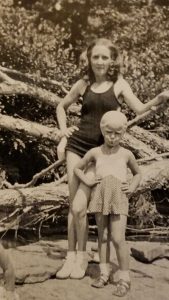
Starting in the 1880s and into the first quarter of the 20th century, the princess style bathing dress was to be found worn by beach-goers. A combination blouse and drawers with a removable skirt, this style allowed even more activity in the water. The skirt could be taken off while swimming, then modestly buttoned back to the waist when out of the water. Serge and mohair fabrics in dark blue and black were commonly used. Sleeves began to shorten during this time, and the use of knitted bathing tights instead of drawers or knickerbockers appeared in the 1890s. Waxed linen, oiled silk, or rubber bathing caps, sometimes covered by a bright turban, protected the hair (p.21-23).
By 1917, there were a two main options for bathing suits: a loose straight suit with no waistline worn with a belt or sash at the hips or the short-sleeved surplice suit with a skirt and bloomers. A third option, the knitted jersey suit, was reserved for expert swimmers (p.26-27). And with the growing popularity of swimming, such swimming suits all but replaced the prior bathing costumes in the 1920s (p.24).
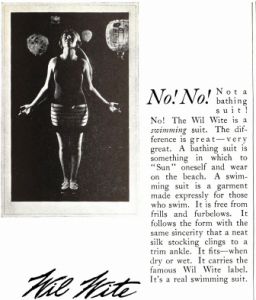
The earliest swimming suits for women appeared in the 1880s; called “bathing jerseys”, they were form-fitting tunics that reached mid-thigh, featured high necks and cap sleeves, and were worn over trunks and stockings or tights (p.24). Knitted one-piece, skirtless swimsuits of the style typical for men were worn by pioneering women swimmers in the late 1900s and 1910s (p.26). By the 1920s, one- and two-piece knitted swimming suits were available; they were worn with stockings and satin or canvas slippers and accompanied by a beach cloak or wide-collared bathing wraps, colorful beach hats, and parasols (p.28). Necklines and armholes grew lower as the decade progressed and by the 1930s, when having a sun tan became popular, “swimming suits covered less of the bather” (p.30).
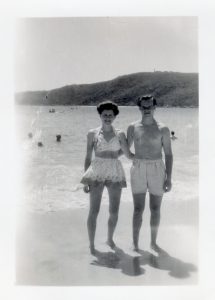
In the 30s, colorful suits featuring novelty effects were produced as swimsuits became stylish as well as functional. The introduction of man-made fabrics and elastic yarn were important innovations in the emerging swim suit industry. The 1940s saw the first bikini arrive in the U.S. from France, while in the 1950s swim suits were designed to sculpt and control the figure with the help of the skillful use of fabrics and plastic boning (p.31-32).
As shown in this highlight of Ms. Kidwell’s interesting look at the history of swimwear, the bathing and swimming costumes worn by our ancestors mirrored the changing social acceptability of swimming over the years. So as you put on your goggles this weekend, give a thought to those who used to swim swathed in yards of fabric or in itchy wool suits!
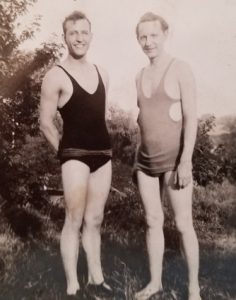
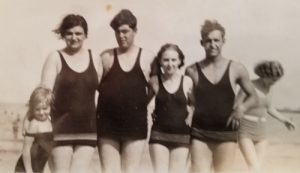
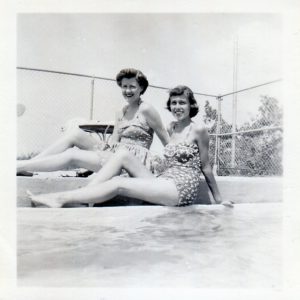

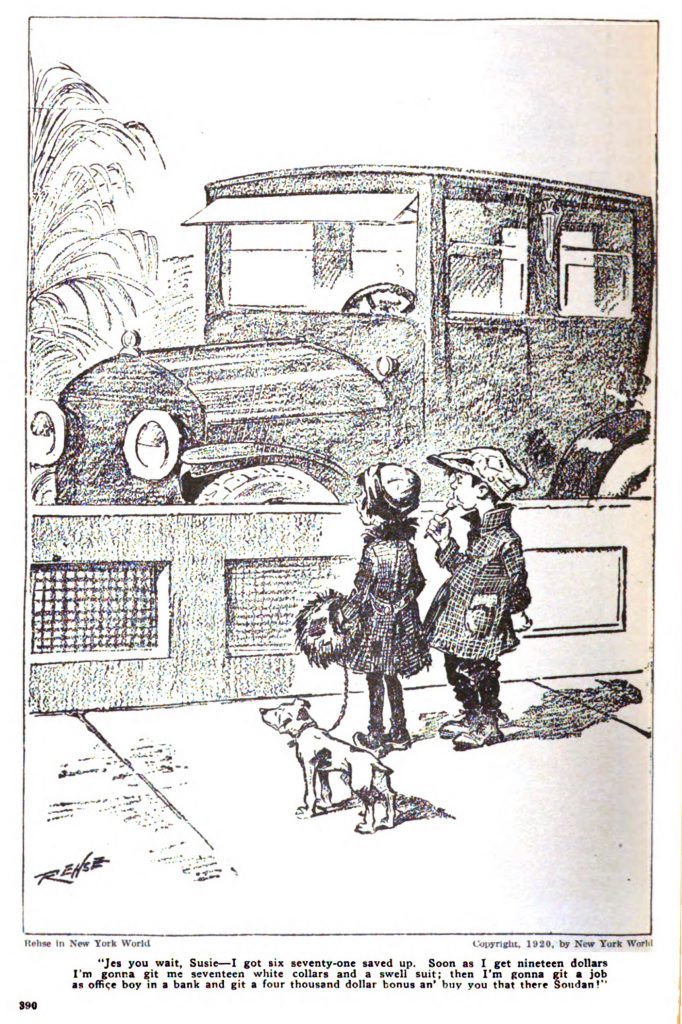
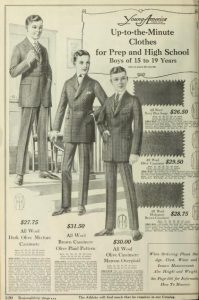
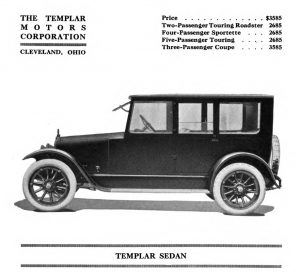

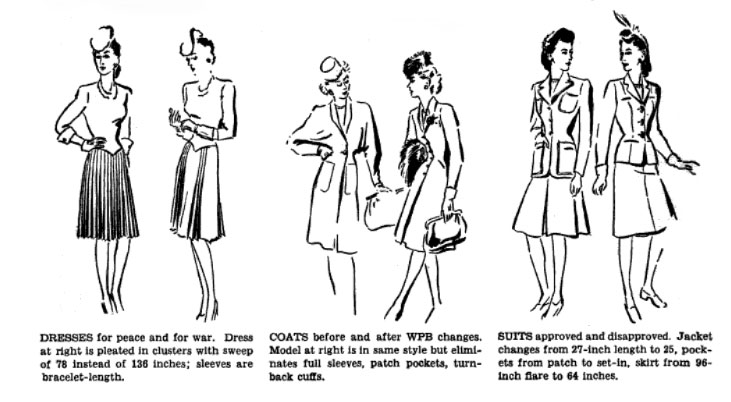
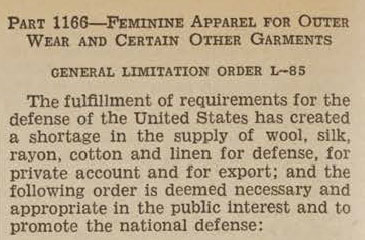
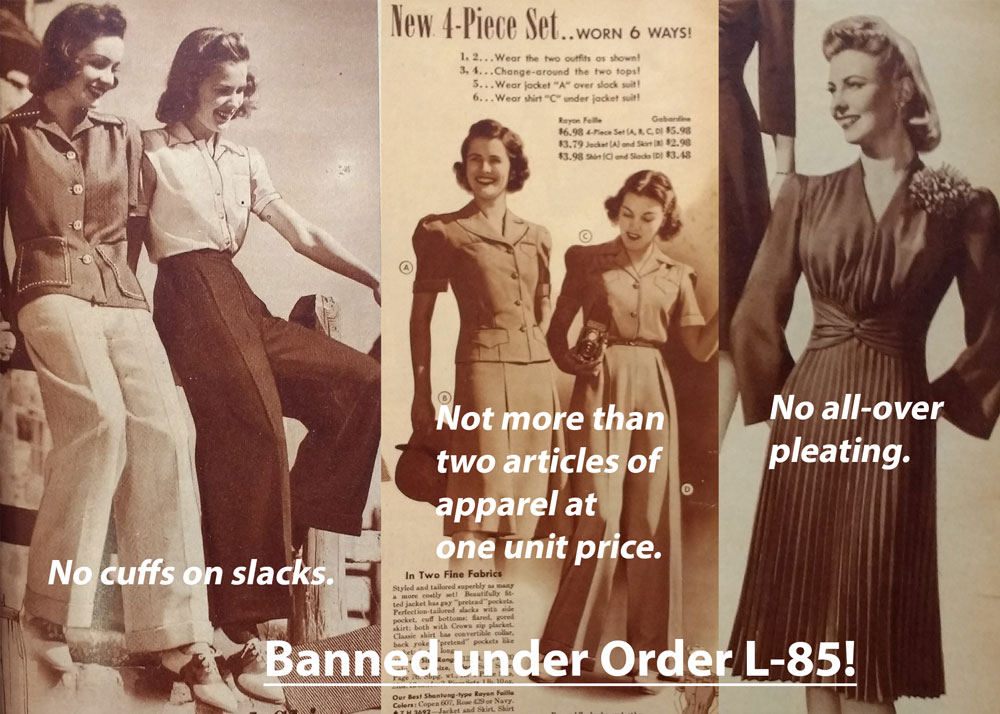
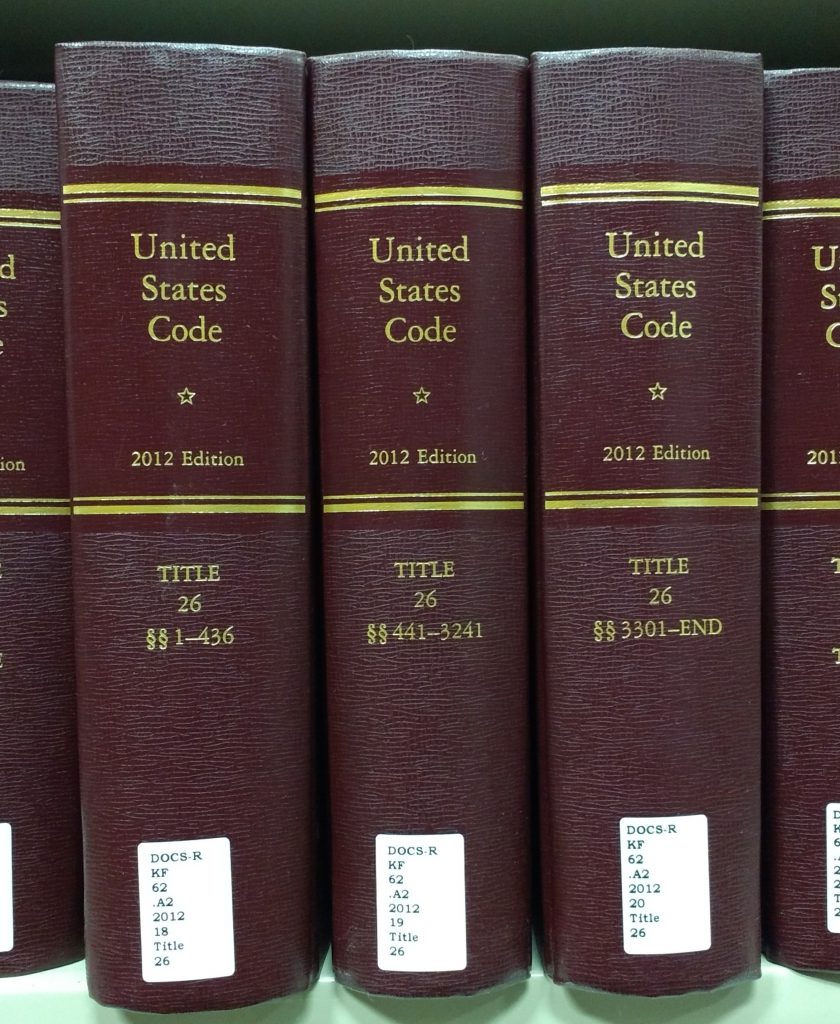
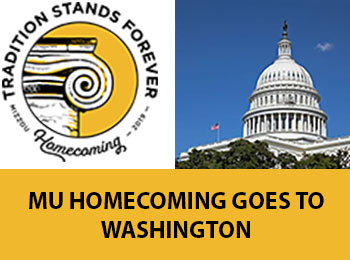
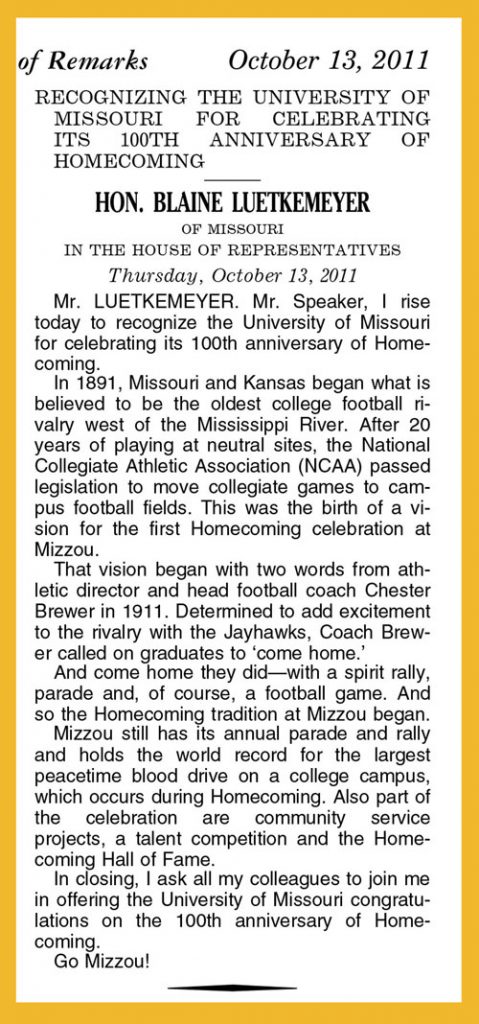
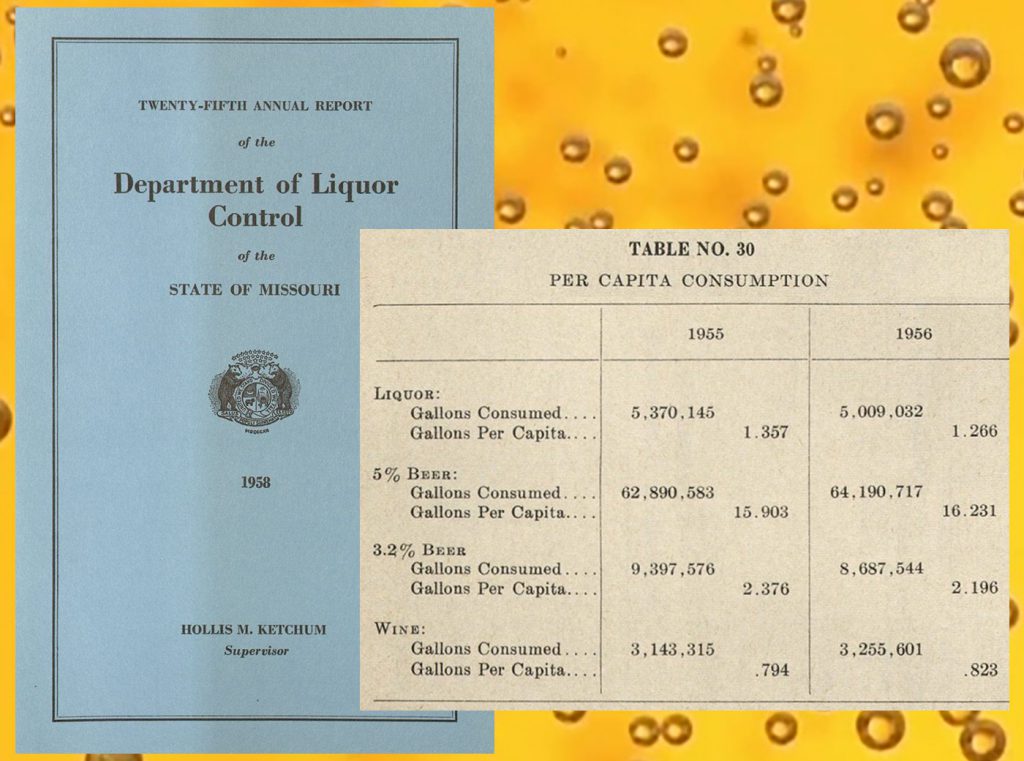
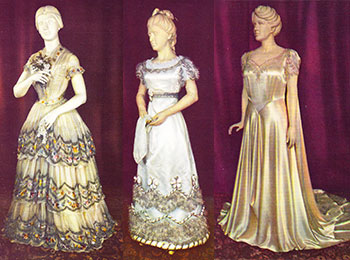
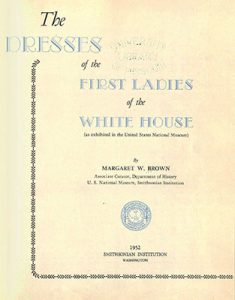 Detailed descriptions of each dress, as well as a portrait and brief biographical sketch of each woman, are also included. The gowns, which belong to a collection of the
Detailed descriptions of each dress, as well as a portrait and brief biographical sketch of each woman, are also included. The gowns, which belong to a collection of the 